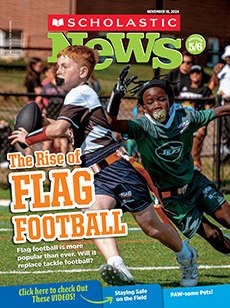You hear a commotion in the cafeteria. The biggest kid in your school is picking on a new student. Some kids are ignoring the situation or nervously walking away. Others are filming it or taking photos with their phones. What are YOU doing?
Unfortunately, scenes like this aren’t uncommon. In a recent study by the U.S. Department of Education, about one out of four middle schoolers reported that they had been bullied at school.
Judy French works for PACER’s National Bullying Prevention Center, an organization that is trying to end bullying. She says it’s important to support kids who are being pushed around, excluded, or hurt by others spreading rumors.
“If it were happening to you, wouldn’t you want someone to help?” French asks. “Even in difficult situations, there are things we can do.”
So how do you know when to stand up to bullying? And when is it better to not get directly involved? On the next page, French weighs in about how to handle two bullying situations.
You hear a commotion in the cafeteria. The biggest kid in your school is picking on a new student. Some kids are ignoring the situation. A few are nervously walking away. Others are filming it or taking photos with their phones. What are YOU doing?
Unfortunately, scenes like this aren’t uncommon. This is according to a recent study by the U.S. Department of Education. About one out of four middle schoolers reported that they had been bullied at school.
Judy French works for PACER’s National Bullying Prevention Center. It’s an organization that is trying to end bullying. She says it’s important to support kids who are being pushed around, excluded, or hurt by others spreading rumors.
“If it were happening to you, wouldn’t you want someone to help?” French asks. “Even in difficult situations, there are things we can do.”
So how do you know when to stand up to bullying? And when is it better to not get directly involved? On the next page, French weighs in about how to handle two bullying situations.

